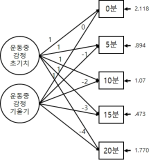
Recent research on exercise and affect has examined participants` affective changes during and after exercise with a longitudinal approach. With regard to this viewpoint, a theoretical model (Dual Mode model) has been presented to explain the different change of affect in an exercise setting and the model identified the impact of psychological factors on the affective changes. However, not only there is little empirical studies on the dual-mode model, but some relevant research has used an inappropriate statistical method (ANOVA), which cannot effectively explain the overall trends in affective change during and after exercise. Exiting research has a limitation to generalize the DM model examining only a certain gender such as active male or inactive female participants. Thus, the aim of present study was to investigate the effect of intrinsic motivation on affective change during and after exercise in participants who do not take part in regular exercise considering gender based difference. 51 inactive university students (M: 36, F: 15) responded a survey measuring intrinsic motivation for running activity and participated in moderate-intensity running exercise to examine affective change during exercise. Therefore, present study examined the influence of intrinsic motivation as a psychological variable on the trend of affective changes during and after exercise based on the dual mode model. Results from the latent curve model analysis revealed that there were decreasing trends of affect during exercise and the trends were individually different. Importantly, the decreasing trends were weaker in the participants with higher intrinsic motivation[FL=-.34, p=.000]. Additionally, participants` affective responses were positively changed after the exercise in general, but the changes were not influenced by intrinsic motivation. Therefore, the decreasing trend of affective change during exercise was weaker in the participants with higher intrinsic motivation, and the positive change in affect after exercise was not influenced by intrinsic motivation.

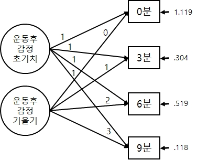
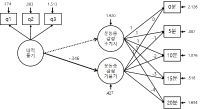


Recently, there have been diverse types of physical activities supported by government policy in S. Korea. However, these activities may not be effective if they do not reach to moderate to vigorous level. This study designed school physical education system based on SPARK program, which include traditional physical education, sports club based physical activity, after school physical activity, and Saturday physical activity, to evaluate its effectiveness associated with physical fitness and empirical meanings of physical activity. This study employed a mixed method research paradigm for better understanding. Among various mixed method paradigm stances, this study employed "blending strategy" for complementary analysis. First of all, the effectiveness in health condition was evaluated by quantitative data. Specifically, physical fitness and lifestyle were analyzed by Helmas, IPAQ, and Accelerometer respectively. Second, empirical meanings of physical activity were analyzed by both Photovoice and in-depth interview which are qualitative research method. The result of this study first showed that a specially designed school physical activity program based on the SPARK contributed to improve students' physical fitness and lifestyle as well, however, there were important differences between male and female students. Second, physical achievement, alteration of spatiotemporal meaning, and change of societal relationship emerged as important themes. Further, these themes showed that they played an important role to maintain students' motivation in physical activity and consequently physical activity promotion was invigorated in school. Based on these results, we synthesized investment factors and process factors and outcome factors respectively. Finally, we suggested alternative teaching methods and suggestions for following research to overcome gender issues.





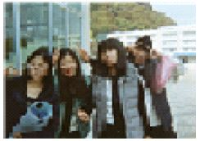




Circadian rhythm (CR) is an intrinsic process that changes in a cycle of approximately 24h/day to maintain body homeostasis. It is mainly controlled by the central command through the suprachiasmatic nucleus, and modern society features can disturb the central CR, contributing to various diseases. Recent studies have provided evidence that extrinsic factors, such as regular physical activity (RPA) and timerestricted feeding (TRF), can also alter the CR peripherally, emphasizing RPA and TRF as the non-therapeutic methods for circadian misalignment (CM). Therefore, this review scrutinizes the regulatory mechanism of CR and summarizes the relationships between CM and various diseases. In addition, by reviewing studies investigating the prevention or improvement of CM via RPA and TRF, the value of circadian biology research that can directly affect health, physical function, and lifespan is summarized. By introducing the scientific evidence for RPA and TRF to maintain and improve CR, we tried to emphasize the importance of regular exercise and healthy eating habits to people in the modern world who have difficulty maintaining CR.
When the long-awaited KSME in PESS was established in 1998, KSME faced a turning point in its growth. Following the changes in both quality and quantity of the society's researches since its establishment and seeking for future themes is important for the society. This research analyzed the society's research trend using mainly the Korean Journal of ME in PESS. Then, by examining the physical fitness test, it proposed possible future themes for the KSME. This research also looked into the American Kinesmetrics’ contribution to Kinesiology, its research trend and future researches The KSME's recent researches show refined quality, diversified themes and reinforcements in practical researches. Regarding the themes, the reliability and validity of tests became predominant, sports analysis and physical activity emerged, and interest in measurement and evaluation in school PE was low. Possible research themes in the future are measurement and evaluation in school PE, game analysis and sport big data. The recent interest of the American Kinesmetrics was the cross validation of criterion-referenced physical fitness cut-off score, the validation of the guideline for physical activity, and the relationship between sedentary behavior and health. Possible future research themes of the American Kinesmetrics were the refinement of test methods, the effectiveness of the physical fitness test award system, and the application of the ubiquitous wearable technology.
Purpose The purpose of this study is to suggest issues needed in the process of developing the next national physical education curriculum. Methods Data were collected from three different physical education curricula including the 2007 revised physical education curriculum, the 2011 physical education curriculum based on the 2009 revised curriculum and the 2015 revised physical education curriculum. Results Three findings emerged. Firstly, there was no clear conceptual relationships between physical activity value and subject competency. Secondly, the way in which physical activity value works as learning content area cannot offer helps to set the level of subject competency and to design physical education lessons that based on the subject competency. Lastly, the 2015 revised physical education curriculum has low level of clarity, usability and readability. Conclusions This study suggests the three different findings as issues that should be discussed in the development of the next physical education curriculum.
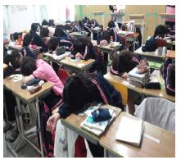
The purpose of this study was to explore Physically Activity Lifestyle pattern & constraints of high school girl in city, and then to propose P.A. promotional ways. I used International Physical Activity Questionnaire Long version and accelerometer to examine outline of P.A. pattern, and photo-voice as qualitative research techniques. The results were as followings. First, sedentary lifestyles of students in G girls' high school was terrible. Accelerometer was said that their inactive time were about 92.4%, however their moderate to vigorous time about 0.76% of the total time of a week. And, school domain of four domains(school, transportation, leisure, domestic chores) were the most active domain of all. Second, P.A. constraints were analyzed as 'because of something no'(time, effort, will, space, physical skills and person) and 'because of something'(smart phone, car, gaze, rules). The key cause were a shortage of time caused by academic based on school curriculum, sedentary leisure and transportation culture. Lastly, I proposed high school girl' P.A. promotional ways in basis of social ecological model.

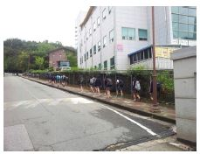
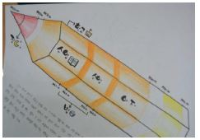
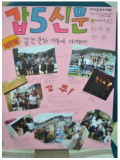
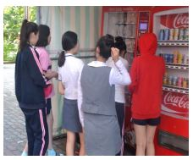
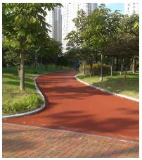

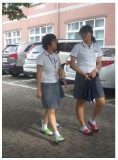

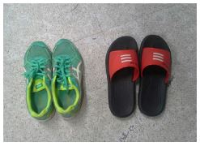
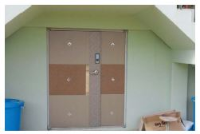
Purpose The purpose of this study was to examine the effects of parents’ involved dance-sports program on a physical activity level and a fitness of children with a developmental disability and on their parents’ perception. Methods The participants were seven children with a developmental disability ranged between 8 and 16 years and seven parents of them participating in the dance-sports program during 90 minutes, 3 times per week for 8 weeks. The quantitative data (i.e., the physical activity level, the physical fitness, and the questionnaire) were collected before and after the intervention. Results The results showed that there was statistically significant difference of the parents’ perception on children’s participation in a physical activity [F=5.63, P<.04]. Although the experimental group showed increase trend, whereas the control group showed decrease trend, there was no statistically significant difference of the physical activity level and the physical fitness of the children with development disabilities. Conclusions Parent participated dance sports program seems to be effective on parents’ perception on children’s participation in a physical activity, physical activity level and the physical fitness of the children with a development disability in experimental group.

The importance of a health problem is emphasized in youth. Unfortunately, healthy activity physical education is not well utilized and is not popularly being researched. In order to improve these problems, this study attempted to explore the validity and applicability of SPARK program by designing and practicing the SPARK based P.E. classes. This study employed a mixed method research method based on a qualitative research strategy. Physical activity and physical fitness level were measured by accelerometers and FITNESSGAM. Additionally, empirical data were collected and analyzed by both Photovoice technique and recording. Findings of this study were divided into designing and practicing perspectives. First of all, the PE classes based on SPARK program was designed by 2009 national physical education curriculum and studies associated with the SPARK program. Further, I attempted to specify teaching strategy for enhancing physical activity level, power of execution and motivation. Second, PE class which has higher physical activity level, more participation and achievement, and successful fulfillment were emerged as consequences. Based on the study results, I discussed the validity and applicability of Physical Fitness based SPARK program and proposed suggestions for future studies.



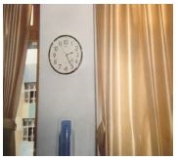




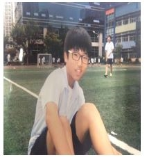

Purpose In general, motor imagery and action observation have been distinguished from each other. Recently, several studies demonstrated that combined approach to motor imagery and action observation can be more effective in motor learning. The present study examined the effects of observation learning combined motor imagery and action observation during acquisition basketball shooting skills. Methods We divided with control group, action observation group and observation learning group combined mental image and action observation in the three middle school. Action observation group provided the action observation program, and observation learning group was performed observation learning combined mental image and action observation training. All groups were perform basic basketball skills. Experimental intervention was performed for 10 weeks, and data analysis was performed 3 groups × 2 time repeated ANOVA. Results The results indicated that all group were improve after intervention, and subjects who participated in combined mental image and action observation was significant in the interaction effect on the front shoot. Moreover, the interaction effect on the motor imagery ability was significant. Conclusions These findings suggest that the use of observation learning combined mental image and action observation strategy potentially optimizes motor skills performance and motor image ability by incorporating motor imagery, especially when observing movements with intent to imitate.

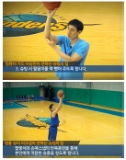

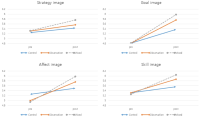
PURPOSE This study aimed to verify the accuracy of three-dimensional (3D) motion data produced through artificial intelligence-based user motion recognition technology with images obtained using a smartphone monocular camera. This was done to explore the possibility of developing an application that can improve the reliability of the measurement of physical activity performing motions and feedback provision. METHODS To check the accuracy of the artificial intelligence-based 3D motion analysis system that utilized a semi-supervised learning method, a commercialized 3D infrared motion analysis system measured and compared motions on three movement planes, motions with limited joint movement, and fast motions in a wide moving range. RESULTS The motions on the coronal and sagittal planes produced through the 3D motion analysis application showed very high measurement accuracy; however, the accuracy of the measurement of motions on the horizontal plane, which could not be measured directly with a camera, was relatively lower than that of the coronal and sagittal planes. Accuracy in measuring 3D motion was moderate in moving motions and low in motions with limited joint movement. CONCLUSIONS For the developed 3D motion analysis system to be used in online physical education, the types of physical activities included in the program should be comprehensively composed through the analysis of the content system of the physical education curriculum and the resultant physical activities.